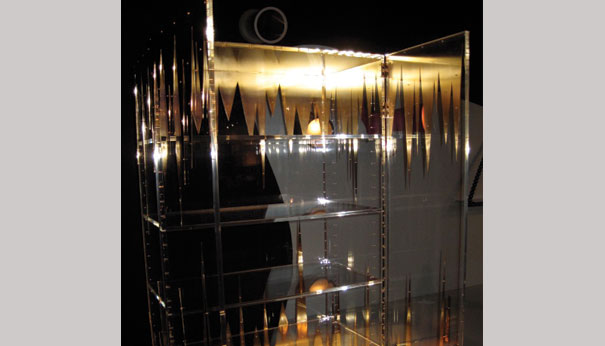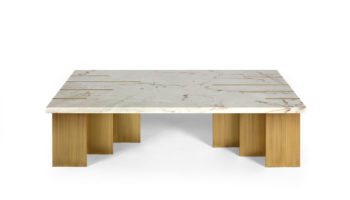Live at Design Miami: Frequency Cabinet by Mattia Bonetti
The question raised time and time again at Design Miami—whether articulated or not—concerned the difference between art and design. Most designers showing in Miami were represented by art galleries, and most of the products were limited editions (very limited, as in 1, 3, or the magic number 8). The Miami Herald ran many stories regarding what they considered to be exorbitant prices at both Design Miami and Art Basel, even coming up with an online game where readers guessed the price of individual works (it was multiple choice).
Frequency Cabinet. Designed by Mattia Bonetti.
On the local news, every evening they showed one purchased piece of art or design along with the price. Consensus in Miami seemed to be, “Can you believe this?” And the current economy did not help Design Miami or Art Basel become more popular. Even some designers themselves were taken aback by the prices and the general theory of exclusivity. At one of the gallery talks, Italian architect-designer Gaetano Pesce—an intoxicatingly captivating bespectacled gentleman with fabulously unusual syntactical patterns and an even better penchant for mispronunciation, as with “ar-ti-fish-a-li-ty”—responded to a question regarding this art/design divide by insisting that design implied mass production that would ideally allow for customization. In short, Design Miami is not your typical design fair—certainly it’s miles away from NeoCon and ICFF (not one furniture manufacturer in sight). Celebrating its fifth year, Design Miami is establishing itself as the show that erases the line between art and design.


It’s perfect, then, that Paul Kasmin Gallery presented the work of Mattia Bonetti, a designer who subscribes to the idea that “design is another medium of contemporary art” (nothing here is from the proverbial horse’s mouth but rather from the dapper gallery representative Nicholas Olney). Bonetti’s Frequency Cabinet, an clear acrylic piece with gold-plated brass details, encapsulates the design as art view—although Mr. Olney did insist that “art versus design is not the issue.” A limited edition of 8 (which could turn out to be less), Frequency Cabinet costs $110,000. It measures 79 x 35.5 x 21 inches, although the prototype at Design Miami will admittedly undergo some changes. The cabinet has already undergone significant alterations since Bonetti’s original design, which included sharp, pointy pieces of brass jutting from the bottom—interesting in theory but ultimately dangerous. The current piece is much sleeker, incorporating the gold frequency waves directly onto the acrylic. What Frequency Cabinet says about time interests me: I like the visual representation of repeating occurrences. Whatever event is transpiring unfurls as a dramatic staccato. Perhaps the Frequency Cabinet can be seen as a symbolic representation of the art/design dispute—the cyclical conflicts, defeats, and triumphs of warring tribes over time.




Leave a Reply